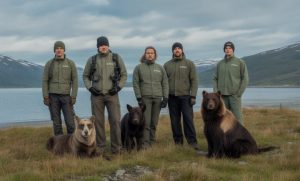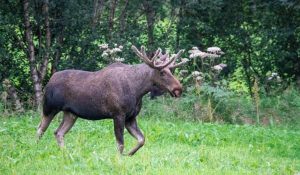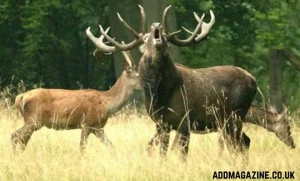Introduction
In the realm of environmental governance, Viltnemnda plays a crucial role in ensuring the protection and sustainable management of natural resources. As an entity that works closely with wildlife protection agencies, Viltnemnda ensures that policies and regulations align with the needs of ecosystems, animals, and the broader environment. Whether you’re a conservationist, policymaker, or simply interested in environmental issues, understanding Viltnemnda and its functions is essential. In this article, we’ll explore the significance of Viltnemnda, its responsibilities, and the impact it has on wildlife conservation and environmental policy.
What is Viltnemnda?
Viltnemnda, a term primarily used in Scandinavian countries, refers to local boards or committees responsible for managing wildlife and hunting regulations. These committees are typically composed of experts, local authorities, and environmental agencies, all of whom work collaboratively to create and enforce policies that ensure the protection of wildlife and biodiversity.
The core mission of Viltnemnda is to balance the needs of wildlife conservation with human activities like hunting, fishing, and land development. These committees work on a local level but are often guided by national conservation laws and international agreements. They ensure that wildlife populations are maintained at sustainable levels, and they make decisions that help prevent overexploitation or destruction of ecosystems.
The significance of Viltnemnda lies in its ability to provide localized, community-driven approaches to wildlife protection, as well as its role in advising government bodies on the state of wildlife and ecosystem health.
Viltnemnda’s Responsibilities in Wildlife Conservation

One of the primary functions of Viltnemnda is to oversee the management of hunting and wildlife populations. This includes regulating hunting seasons, establishing bag limits, and controlling the number of hunters allowed in specific areas to avoid overhunting. Additionally, Viltnemnda works to ensure that hunting practices are ethical and sustainable, considering both ecological balance and cultural traditions.
By collaborating with other environmental agencies and NGOs, Viltnemnda also plays a pivotal role in creating conservation strategies for endangered species and preserving biodiversity. It works on habitat restoration projects, coordinates with research teams to monitor wildlife populations, and implements strategies to protect sensitive habitats from destruction due to urbanization or industrialization.
Moreover, Viltnemnda has a key responsibility in educating the public and hunters about sustainable practices, conservation ethics, and the importance of biodiversity. Through educational programs and workshops, it fosters a deeper understanding of the role humans play in maintaining ecological balance.
The Role of Viltnemnda in Sustainable Land Use
Beyond wildlife protection, Viltnemnda plays an important role in ensuring that land use does not compromise the integrity of ecosystems. In many cases, local boards are involved in land-use planning and development decisions, particularly in areas where there are high ecological values or sensitive wildlife habitats.
Viltnemnda ensures that any development projects, whether for agriculture, housing, or industry, are done in a way that minimizes negative impacts on the environment. By working closely with landowners, developers, and local authorities, the committee helps implement practices that protect biodiversity and reduce habitat fragmentation.
For example, before development is allowed in a region, Viltnemnda might conduct environmental assessments to determine the potential impact on local wildlife. Based on the findings, they may recommend mitigation measures, such as wildlife corridors or restrictions on construction during certain seasons to avoid disrupting animal behavior.
The role of Viltnemnda in land-use management ensures that development and conservation go hand in hand, promoting both environmental protection and sustainable growth.
Viltnemnda and Public Engagement in Environmental Policy

Public engagement is another critical component of Viltnemnda’s work. The committee ensures that local communities are involved in the decision-making process surrounding wildlife conservation and land-use management. Public input is invaluable for ensuring that policies are both effective and aligned with the needs of the community.
Viltnemnda often holds consultations with local stakeholders, including landowners, indigenous communities, conservationists, and the general public, to gather opinions on various issues, such as hunting regulations, protected areas, and environmental conservation efforts. These consultations help to shape policies that are both inclusive and practical for local communities.
In addition to formal consultations, Viltnemnda plays a vital role in educating the public about the importance of conservation and responsible land use. Through outreach programs, events, and collaborations with local schools, the committee helps raise awareness about the interconnectedness of human activities and environmental health.
By fostering open dialogue and promoting community involvement, Viltnemnda ensures that conservation efforts are embraced by those most directly impacted by them.
Challenges and Opportunities for Viltnemnda
Despite its many contributions to wildlife protection and sustainable land use, Viltnemnda faces a variety of challenges. One of the biggest obstacles is balancing human interests with the needs of wildlife conservation. In areas where land use is intensive, such as farming or forestry, ensuring that ecosystems remain intact can be difficult.
Another challenge is addressing the impact of climate change on wildlife populations and habitats. As weather patterns become more unpredictable and habitats shift, Viltnemnda must adapt its policies and strategies to ensure that wildlife can thrive in changing environments.
However, these challenges also present opportunities for innovation and collaboration. By partnering with environmental scientists, NGOs, and policymakers, Viltnemnda can implement more effective solutions to address climate change, habitat loss, and the overexploitation of natural resources.
Additionally, with increasing global interest in environmental protection, Viltnemnda has the opportunity to lead by example, demonstrating how local governance can drive meaningful change in conservation efforts.

Conclusion
In conclusion, Viltnemnda plays an essential role in managing wildlife, promoting sustainable land use, and fostering public engagement in conservation efforts. By balancing the needs of humans with the protection of ecosystems, Viltnemnda ensures that both the environment and local communities thrive together. Its influence extends beyond wildlife management, impacting land-use policies, public awareness, and environmental governance at large. As we continue to face new challenges in conservation, Viltnemnda will remain a critical player in ensuring the sustainability of our natural resources.
Frequently Asked Questions (FAQs)
What is Viltnemnda?
Viltnemnda is a local board or committee responsible for managing wildlife and hunting regulations, ensuring sustainable practices, and protecting biodiversity in various regions.
How does Viltnemnda contribute to wildlife conservation?
Viltnemnda regulates hunting practices, oversees wildlife population management, and collaborates with other organizations on habitat restoration and species protection projects.
Does Viltnemnda play a role in land-use planning?
Yes, Viltnemnda is often involved in land-use planning to ensure that development projects do not harm sensitive ecosystems and wildlife habitats.
How does Viltnemnda engage the public in environmental policies?
Viltnemnda holds consultations, educates the public through outreach programs, and collaborates with local stakeholders to create inclusive conservation policies.
What challenges does Viltnemnda face?
Viltnemnda faces challenges such as balancing human development with wildlife protection, addressing the impacts of climate change, and adapting policies to new environmental realities.